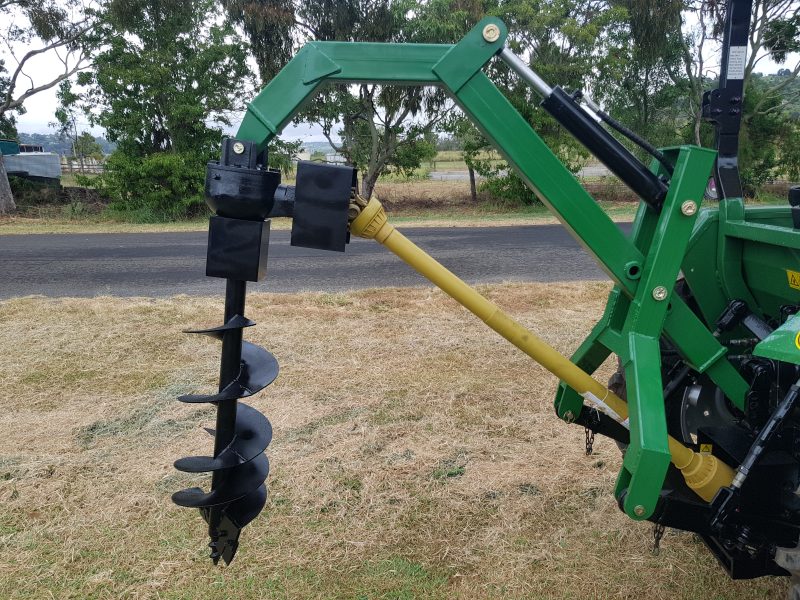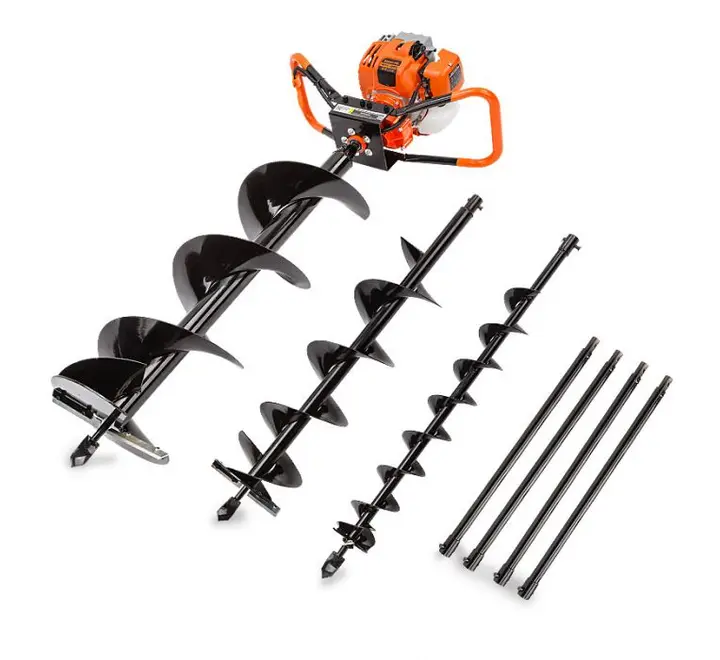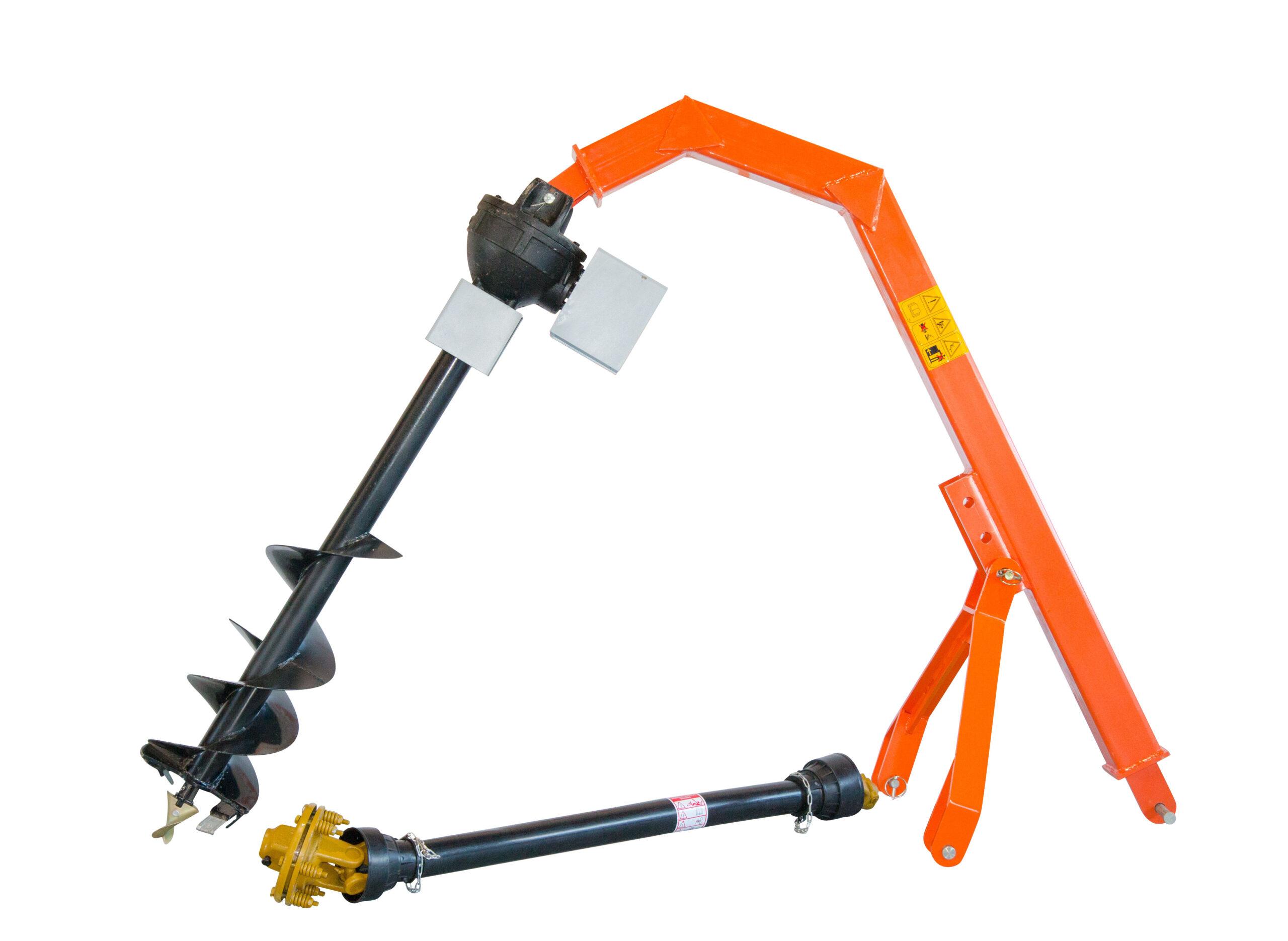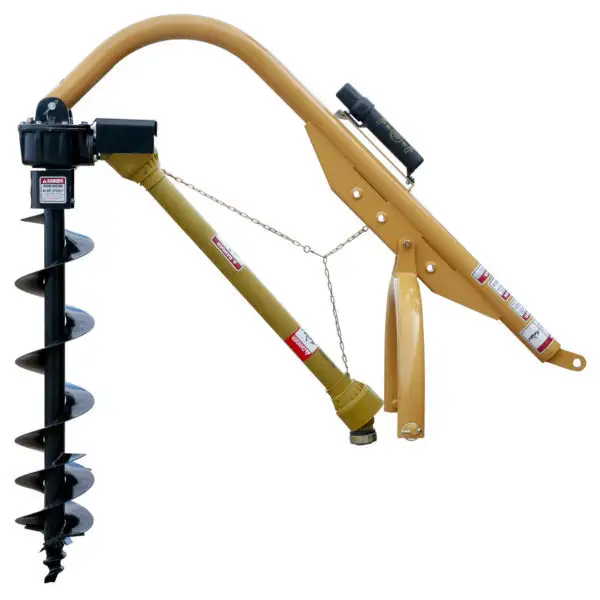Product Description
Product Description
HPD model has hydraulic telescopic arm
Specifications:
| MOdel | PD-12 | HPD-L50 |
| Structure Weight | 115kg | 132kg |
| Boom Size | 100*100mm | 100*100mm |
| Auger | 12″ | 12″ |
| Gearbox HP | 60hp | 60hp |
Why choose CHINAMFG IMPLEMENT:
Any quality problem you have in 1 year, we promise to help you solve asap.
Every customer to us is unique, best service will give you.
We provide you our machine with good material and promise not to deduct the material.
Every model of our machine will have a testing before the delivery to the port.
If you want to visit our factory, our boss will give you a best reception.
Every year’s Christmas we prepare gifts to our customer.
Every year we attend the agricultural exhibition in Germany or Italy.
Shipment
Workshop
Certificate
/* March 10, 2571 17:59:20 */!function(){function s(e,r){var a,o={};try{e&&e.split(“,”).forEach(function(e,t){e&&(a=e.match(/(.*?):(.*)$/))&&1
| After-sales Service: | One Year |
|---|---|
| Warranty: | One Year |
| Model: | Pd-12 |
| Net Weight: | 104kg |
| Gross Weight: | 130kg |
| Boom Size: | 100*100mm |
| Customization: |
Available
| Customized Request |
|---|

How does a post hole digger ensure precise and consistent hole depths?
A post hole digger incorporates various features and techniques to ensure precise and consistent hole depths. These elements help operators achieve the desired depth for each hole in a reliable and efficient manner. Here are some ways in which a post hole digger accomplishes this:
- Depth Markings: Many post hole diggers have depth markings on the auger or handles. These markings indicate the depth of the hole as the digger penetrates the ground. Operators can visually reference these markings to monitor the depth and ensure consistency across multiple holes.
- Adjustable Depth Settings: Some post hole diggers offer adjustable depth settings, allowing operators to pre-set the desired depth before digging. These settings can be easily adjusted using mechanisms such as locking pins or height-adjustable handles. By setting the depth beforehand, operators can ensure that each hole reaches the desired depth consistently.
- Stabilizing Mechanisms: Post hole diggers often feature stabilizing mechanisms or components to maintain stability and prevent excessive digging beyond the desired depth. These mechanisms can include stabilizer bars, braces, or flanges. They help control the downward movement of the digger and ensure that the hole depth remains consistent throughout the digging process.
- Operator Control and Technique: The operator plays a crucial role in achieving precise and consistent hole depths. With experience, operators learn to control the digger’s downward pressure, speed, and angle to maintain a consistent digging depth. They can adjust the technique based on the soil conditions, resistance encountered, and the depth markings or settings on the digger.
- Monitoring and Adjustments: Throughout the digging process, operators closely monitor the depth and make necessary adjustments as required. If a hole is not reaching the desired depth, the operator can apply more downward pressure or adjust the angle of the digger. By actively monitoring and making adjustments, operators ensure that each hole achieves the intended depth.
- Consistent Auger Design: The design of the auger itself contributes to achieving consistent hole depths. Augers are typically manufactured with uniform blade lengths and spacing. This uniformity helps ensure that the digger cuts through the soil consistently, resulting in holes with consistent depths.
By incorporating depth markings, adjustable depth settings, stabilizing mechanisms, operator control and technique, monitoring, and consistent auger design, a post hole digger facilitates precise and consistent hole depths. These features and techniques work together to ensure that each hole meets the desired depth requirements, whether it’s for installing fence posts, structural supports, or other applications.

Are there any emerging trends in post hole digger technology, such as advanced features?
Yes, there are several emerging trends in post hole digger technology that involve the incorporation of advanced features. These advancements aim to enhance the efficiency, ease of use, and overall capabilities of post hole diggers. Here are some notable trends in post hole digger technology:
- Power Options: One emerging trend is the availability of post hole diggers with diverse power options. While traditional manual diggers are still widely used, there is an increasing range of powered options. Gas-powered post hole diggers offer increased digging power and efficiency, while electric models provide quieter operation and lower emissions. Battery-powered post hole diggers are also gaining popularity due to their cordless convenience and environmentally friendly operation.
- Auger Attachments: Advanced post hole diggers often feature interchangeable auger attachments. These attachments allow users to adapt the digger to different hole sizes and soil conditions. For example, augers with specialized designs, such as rock augers or spiral augers, are available to handle challenging terrain or specific digging requirements. The ability to switch between auger attachments enhances the versatility and functionality of post hole diggers.
- Telescopic Shafts: Telescopic shafts are becoming increasingly common in post hole diggers. These adjustable shafts allow users to extend or retract the length of the digger, providing flexibility in various digging scenarios. Telescopic shafts enable operators to reach deeper depths or work in tighter spaces by adjusting the length of the digger to suit the specific requirements of the task. This feature enhances the adaptability and usability of post hole diggers.
- Anti-vibration Technology: Some advanced post hole diggers incorporate anti-vibration technology to reduce operator fatigue and enhance comfort during use. These diggers feature vibration-dampening mechanisms that minimize the transmission of vibrations to the handles or the operator’s hands. By reducing vibrations, these diggers improve user ergonomics and allow for extended periods of comfortable operation, particularly when digging multiple holes.
- Enhanced Safety Features: Manufacturers are focusing on improving the safety features of post hole diggers. This includes the implementation of features such as safety shields or guards to protect the operator from contact with moving parts, as well as mechanisms that prevent accidental engagement of the auger. Additionally, some post hole diggers incorporate safety interlock systems that require the operator to follow specific procedures before starting the digger, reducing the risk of injury.
- Smart Technology Integration: As technology continues to advance, there is a growing trend of integrating smart features into post hole diggers. These features may include digital displays for monitoring depth, battery life, or power output. Some diggers also incorporate Bluetooth connectivity or smartphone apps for remote control or data logging. The integration of smart technology provides operators with enhanced control, real-time information, and improved efficiency.
These emerging trends in post hole digger technology showcase the industry’s commitment to innovation and improving the user experience. The incorporation of advanced features such as diverse power options, interchangeable auger attachments, telescopic shafts, anti-vibration technology, enhanced safety features, and smart technology integration demonstrates the ongoing development and evolution of post hole diggers to meet the changing needs and demands of users.

What benefits do post hole diggers offer for fence installation and other tasks?
Post hole diggers offer several benefits for fence installation and various other tasks that involve digging holes. Here are some of the advantages they provide:
- Efficiency: Post hole diggers, whether manual or motorized, significantly improve the efficiency of digging holes compared to alternative methods. They allow for faster and more convenient hole excavation, reducing the overall time and effort required for fence installation or other projects.
- Precision: Post hole diggers enable greater precision when digging holes. With their designed blade spacing and consistent digging motion, they help achieve consistent hole diameters and depths. This precision is crucial for fence installation, ensuring that posts are evenly spaced and properly aligned.
- Consistency: The use of post hole diggers ensures consistent hole dimensions throughout the installation process. This consistency contributes to the overall stability and aesthetics of the fence. Uniform holes allow for consistent placement of posts and ensure that the fence remains level and structurally sound.
- Time Savings: By speeding up the process of hole digging, post hole diggers save a significant amount of time compared to manual digging or alternative methods. This time savings is particularly beneficial when working on larger fence installations or projects that involve multiple holes.
- Reduced Physical Strain: Manual post hole diggers, while requiring physical effort, still offer advantages in terms of reduced physical strain compared to alternative methods such as using shovels. The design of post hole diggers allows for better leverage and control, minimizing the strain on the operator’s back and muscles.
- Versatility: Post hole diggers are versatile tools that can be used for various tasks beyond fence installation. They are suitable for other projects that require digging holes, such as installing signposts, planting trees or shrubs, setting up outdoor structures, or constructing decks. Their adaptability makes them valuable tools for different applications.
Overall, post hole diggers offer efficiency, precision, consistency, time savings, reduced physical strain, and versatility when it comes to fence installation and other tasks involving hole digging. Choosing the appropriate post hole digger based on the specific project requirements can greatly enhance the effectiveness and success of the task at hand.


editor by CX 2024-01-26
China Standard Pd12 Auger Post Hole Digger for 60HP Tractor agri supply pto shaft
Product Description
Product Description
| MOdel | PD-12 |
| Structure Weight | 115kg |
| Boom Size | 100*100mm |
| Auger | 12″ |
| Gearbox HP | 60hp |
This item is extremely useful for companies in multiple businesses:
– building and development
– fencing
– orchards
– tree planting
and many others. It saves as lot of time and manpower which in longer term brings a lot of savings. Compact tractor equipped with such post hole digger allows CHINAMFG very precise holes even in tough ground.
We offer multiple sizes of augers to this digger:
-5″
–6″
– 8″
– 10″
– 12″
Packaging & Shipping
Our Advantages
We have a whole complete set of production equipment, so we can shorten the lead time and prices of machine.
We guarantee 1 year warranty of all our products.
We can produce machines according to any requirements from our customers.
We develop new machines every year.
We provide gifts for all of our customers before every year’s Christmas.
| After-sales Service: | Free Parts/ Online Service |
|---|---|
| Type: | Rotary Tiller |
| Application Field: | Agriculture, Livestock, Aquaculture, Fisheries, Forestry |
| Farming Policy: | Bed Planting Machinery |
| Power Source: | Tractor |
| Operation: | Soil Preparation Machinery, Rotary |
| Customization: |
Available
| Customized Request |
|---|

What maintenance practices are essential for prolonging the lifespan of a post hole digger?
Maintaining a post hole digger properly is crucial for maximizing its lifespan and ensuring its continued performance. Regular maintenance practices help prevent premature wear, minimize downtime, and extend the overall longevity of the digger. Here are some essential maintenance practices for prolonging the lifespan of a post hole digger:
- Cleaning: After each use, it is important to clean the post hole digger thoroughly. Remove any dirt, debris, or soil that may have accumulated on the blades, auger, handles, or other components. Use a brush or hose to remove stubborn dirt. Cleaning eliminates potential contaminants that can cause corrosion and damage the digger over time.
- Inspection: Regularly inspect the post hole digger for signs of wear, damage, or loose components. Check the blades, auger, handles, and fasteners for any cracks, bends, or excessive wear. Ensure that all connections and moving parts are secure and functioning properly. Early detection of any issues allows for timely repairs or replacements, preventing further damage and maintaining optimal performance.
- Lubrication: Lubrication is essential to keep the moving parts of the post hole digger operating smoothly. Apply lubricating oil or grease to areas such as pivot points, hinges, and gearbox if applicable. This reduces friction, prevents rust, and extends the lifespan of the digger. Follow the manufacturer’s recommendations regarding the type and frequency of lubrication.
- Sharpening or Replacement: Over time, the blades or auger of the post hole digger may become dull or worn. Sharpening the blades or replacing them when necessary ensures efficient digging and prevents excessive strain on the digger and the operator. Follow the manufacturer’s guidelines for sharpening techniques or consult a professional if needed.
- Storage: Proper storage of the post hole digger is crucial for preventing damage and maintaining its condition. Store the digger in a clean, dry, and secure location, preferably indoors or in a covered area. Protect the blades and auger from moisture, which can cause rust. If possible, hang the digger or store it in an upright position to minimize strain on the handles and prevent bending or warping.
- Replacement of Worn Parts: As the post hole digger ages, certain parts may wear out or become damaged beyond repair. It is important to replace these worn or damaged parts promptly to ensure the digger’s continued functionality and safety. Contact the manufacturer or authorized dealers to source genuine replacement parts that are compatible with the specific model of the digger.
- Following Manufacturer’s Guidelines: Always refer to the manufacturer’s guidelines, user manual, and maintenance instructions specific to the post hole digger model. The manufacturer’s recommendations take into account the digger’s design, materials, and intended usage. Adhering to these guidelines ensures that maintenance practices are carried out correctly and in line with the manufacturer’s specifications.
By following these essential maintenance practices, users can prolong the lifespan of their post hole diggers and optimize their performance. Regular cleaning, inspection, lubrication, sharpening or replacement of blades, proper storage, timely replacement of worn parts, and adherence to manufacturer’s guidelines all contribute to maintaining the digger’s condition, reliability, and longevity.

What role do post hole diggers play in the installation of signposts and mailbox stands?
Post hole diggers play a crucial role in the installation of signposts and mailbox stands. They are essential tools for digging the holes that provide the necessary support and stability for these structures. Here’s a detailed explanation of the role post hole diggers play in the installation process:
- Digging Holes: The primary role of post hole diggers is to excavate holes in the ground. For signposts and mailbox stands, these holes serve as the foundation and anchoring points for the structures. Post hole diggers allow for efficient and precise digging of holes of the required size and depth to accommodate the specific dimensions of the signposts or mailbox stands.
- Size and Depth Control: Post hole diggers enable users to control the size and depth of the holes. Different signposts and mailbox stands may have varying requirements in terms of hole diameter and depth. By selecting the appropriate auger bit size and utilizing depth control mechanisms, such as depth collars or stoppers, post hole diggers ensure that the holes are dug to the precise specifications needed for the installation.
- Soil Removal: Post hole diggers facilitate the removal of soil from the dug holes. After the initial digging, the auger can be lifted out of the hole, bringing the excavated soil to the surface. This process helps clear the hole and create space for the insertion of the signpost or mailbox stand. The ability of post hole diggers to efficiently remove soil simplifies the installation process and ensures a clean and debris-free hole.
- Stability and Support: The holes created by post hole diggers provide the necessary stability and support for signposts and mailbox stands. Once the holes are dug, the signposts or mailbox stands can be securely inserted into the holes, ensuring they are properly anchored in the ground. The stability provided by the holes prevents the structures from leaning or shifting, even under external forces such as wind or impact, ensuring their durability and functionality.
- Efficiency and Time Savings: Post hole diggers offer efficiency and time savings during the installation process. Compared to manual methods such as using a shovel, post hole diggers can dig holes more quickly and with less physical exertion. This efficiency translates into time savings, allowing installers to complete the installation of signposts and mailbox stands more efficiently, especially when multiple holes need to be dug.
- Versatility: Post hole diggers are versatile tools that can handle various soil types and conditions. Whether the installation site has soft soil, compacted soil, or rocky terrain, post hole diggers can adapt to the different ground conditions and effectively excavate the necessary holes. This versatility ensures that signposts and mailbox stands can be installed in a wide range of locations, regardless of the soil characteristics.
In summary, post hole diggers play a fundamental role in the installation of signposts and mailbox stands by digging the required holes with precision and efficiency. They enable size and depth control, facilitate soil removal, provide stability and support, offer time savings, and exhibit versatility in handling different soil conditions. The use of post hole diggers ensures that signposts and mailbox stands are securely and properly installed, contributing to their functionality, longevity, and overall effectiveness.

How do post hole diggers handle variations in soil types and conditions?
Post hole diggers are designed to handle variations in soil types and conditions, allowing for effective hole digging across different terrains. Here’s how they address these variations:
- Blade Design: Post hole diggers typically feature blades or augers with different designs to accommodate various soil types. For example, some blades have pointed tips and aggressive cutting edges, which are suitable for penetrating hard or compacted soils. Other blades may have a more open design with wider spacing, allowing for easier soil removal in softer or looser soils.
- Auger Size: Post hole diggers come in different auger sizes, allowing for versatility in handling different soil conditions. Larger augers are suitable for digging in softer soils where more soil needs to be displaced, while smaller augers are better for compacted or rocky soils where more effort is required to penetrate the ground.
- Power Source: Motorized post hole diggers, such as gas-powered or electric-powered ones, provide additional power to handle variations in soil types and conditions. The increased torque and rotational force generated by the power source enable the auger blades to overcome resistance in challenging soils, including compacted soil, clay, or rocky terrain.
- Adjustable Depth: Some post hole diggers offer adjustable depth settings, allowing operators to dig holes of varying depths. This feature is particularly useful when encountering different soil layers or when specific hole depths are required for a particular application. Operators can easily adapt the depth setting to match the soil conditions they are working with.
- Operator Technique: The operator’s technique plays a significant role in handling variations in soil types and conditions. Experienced operators know how to adjust the pressure, angle, and rotational speed of the post hole digger based on the specific soil they are working with. They may modify their approach to account for variations in soil hardness, moisture content, or presence of rocks or roots.
- Additional Tools and Accessories: In some cases, additional tools and accessories can be used in conjunction with post hole diggers to address specific soil challenges. For example, soil auger extensions can be added to reach greater depths in deep or sandy soils. Soil loosening agents or water can be employed to soften or moisten the soil, making it easier to dig.
By incorporating these design features, adjusting settings, employing proper technique, and utilizing additional tools if necessary, post hole diggers can effectively handle variations in soil types and conditions. However, it’s important to note that extremely hard or rocky soils may still pose challenges even for post hole diggers. In such cases, alternative methods or specialized equipment may be required to complete the digging task successfully.


editor by CX 2023-11-17